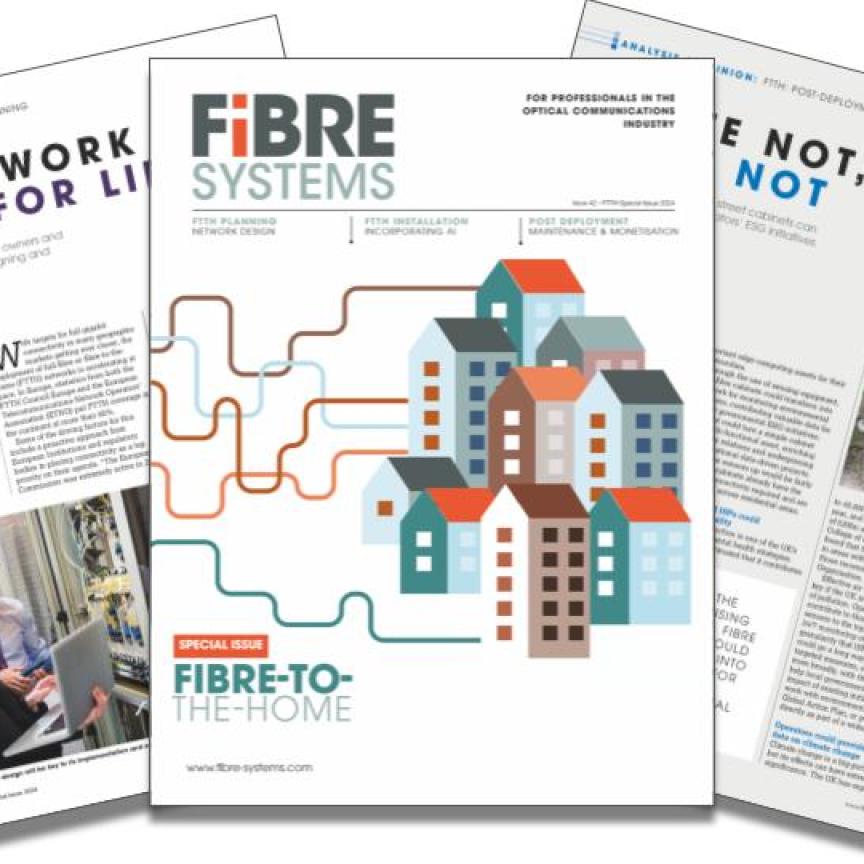Mattias Fridström and Parthiban Kandappan put software-driven, real-time optical layer performance awareness to the test
At its core, the digital revolution permeating every nook and cranny of our lives is fuelled by one thing only – innovation in connectivity technologies.
Whether you are accessing a critical SAP application from your office, standing on a street requesting a Lyft, binging on a new Netflix series at Starbucks, or sitting on a couch at home with a gaming controller, dependent on fast access to graphic processors in data centres thousands of miles away for every click, a high-quality and uninterrupted connection is critical to user experience.
Capacity is the raw fuel that drives that experience, and the seemingly insatiable demand for high-capacity connectivity, shows no sign of abating. The result is growing pressure on the fibre optic backbone networks of service providers and internet content providers alike.

Figure 1: Assessing real-time performance awareness on a 1,300km production network route (credit: Infinera)
Innovation in optical layer connectivity has traditionally been the domain of physics and hardware devices such as lasers that enable the transmission of photons over fibre optic channels. Researchers continue to push the boundaries of hardware-based communications technology, with single-wavelength transmission capacity now reaching an astonishing 800Gb/s.
Testing times
Recently, however, advances in optical layer software intelligence and automation are providing new tools to extract maximum value from physical fibre assets while enhancing end-user services. Leveraging machine learning and artificial intelligence (AI) concepts and capabilities, these cutting-edge software advances, including real-time performance awareness and analytics, are being put to the test in production networks.
Optical layer software intelligence and automation represent one of the key areas on which Telia Carrier and Infinera have been collaborating for a number of years. Last year, for example, we conducted a live field trial that demonstrated the operational value of optical performance awareness based on accurate residual margin measurement during real-time operations and based on state-of-life fibre conditions.

Figure 2: Real-time service health check conducted during field trial (credit: Infinera)
During the trial, 200G wavelengths were provisioned on-demand based on the accurate real-time (DSP-independent) visibility of residual margin and OSNR on a 1,300km long-haul transmission route between Hamburg and Prague. The live field trial featured a demonstration of in-service optical margin measurement without the need for additional hardware equipment.
Linking up
Earlier this year, we extended our collaboration in the field of software intelligence and automation with an expanded field trial that spanned 490 production links across the Telia Carrier backbone network in Europe. This new field trial was expanded both in terms of scope and length of time, with testing conducted across metro, long-haul core, and subsea network domains and lasting more than a month.
During the course of the trial a variety of real-time use cases were conducted on network routes and links, including dashboard-based service health checks, real-time performance awareness, and residual margin analysis and optimisation.
Since one performance parameter alone is not sufficient to understand the real-time state of a fibre optic connection, the field trial testing included real-time awareness of pre-forward error correction (FEC) bit error rate (BER), OSNR, and residual margin. Figure 2 highlights the results of a service health check (SHC) conducted during the trial in which all monitored performance parameters on the link (e.g., pre-FEC, OSNR, residual margin) showed stable operational conditions over the monitoring period.
Send a signal
Understanding the real-time state of residual margin in a multi-domain portion of the Telia Carrier network was a key objective of the expanded trial. Residual margin represents the most useful measure of received signal quality and determines how much room there is for the signal to degrade without impacting error-free operation.

Figure 3: Example of the importance of residual margin in real-time performance awareness, with evidence of available link budget that can optimised in a variety of ways by the operator (credit: Infinera)
Residual margin is impacted by OSNR, linear impairments, and nonlinear impairments. Measured in dB, residual margin tells you by how many dB OSNR can be reduced, if linear and non-linear impairments remain constant, until post-FEC errors will occur. Accurately assessing the residual margin requires accurately determining the impact of all three. This real-time knowledge can provide the tools to mine available network margin and re-purpose it to the benefit of both network operations and end-user customers.
As optical networks become more dynamic and the evolution of coherent technology introduces a wider range of modulation schemes and baud rates, advances in software-driven automation, real-time performance awareness and network adaptability will lay the foundation for a new level of optical layer efficiency and agility.
Blissfully unaware of what is going on beneath the surface, digital consumers will enjoy greater service performance – faster streaming rates, better gameplay and enhanced graphics and their favourite coffee might even taste just that little bit better.
Mattias Fridström is chief evangelist, Telia Carrier; Parthiban Kandappan is chief technical officer, Infinera


